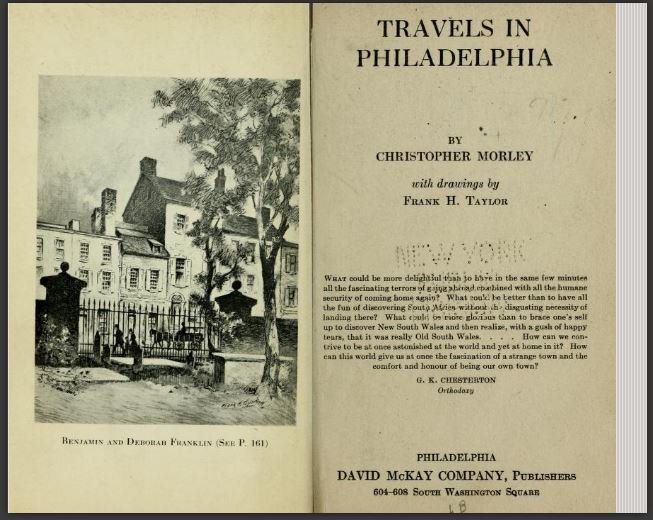What was a stroll in 1918 Philadelphia like for an aimless wanderer? Perhaps by walking aimlessly, we can #explore1918 and better understand Philadelphia history.

Paris Street;Rainy Day by Gustave Caillebotte (1877)
Last year, the Barnes Foundation had an exhibit on the Art of Flânerie which aimed to look at the modern "Flaneur" or person who strolls or wanders through the city with no apparent mission or task at hand. What a wonderful way to #explore1918 and better understand #Philadelphia history.

Paul Gavarni, "Le Flaneur" (1842)
Where can we start?
First of all, it took a brave person to want to walk around Philadelphia in 1918. After all, the Flu was going around and claiming lives left and right. Secondly, there was a war on and those who didn't get excused from the draft were training or abroad. Others were hard at work at the shipyard.
If you were lucky enough to be wealthy and free of commitments you might take an aimless walk around Philadelphia.
What would you see?
So you are lucky enough to be a Flaneur and partake in aimless wondering. What might you see? Well, if you wanted something simple, you'd just walk around one of Philadelphia's many parks. It might look something like this image of Fairmount Park in the early 1900s.

If you wanted more of a test for your Flaneur imagination, a good place to walk might be Frankford Avenue. Not only was there always movement on this important Philadelphia avenue, but there was also sounds and smells that would've likely captured the senses.

What is the point?
The art of walking around aimlessly was not something all people in Philadelphia were able to do. Rather, it was a pastime of the people who were not busy working on the docks, training in the military, or just trying to make ends meet. Analysis of the Flaneur and the art of Flanerie is just one of the many ways in which we can see that a city encompasses both heaven and hell. For some it is a treadmill of work and for others it is a gentle afternoon saunter to wherever the heart wishes to walk.

Flanerie or just a walk? A Philadelphian walks around Grafitti Pier
Do flaneurs still exist today? Who are the flaneurs of today? Do you know the art of Flanerie?
Center for Public History and MLA Program, is exploring history and empowering education. Click here to learn more.100% of the SBD rewards from this #explore1918 post will support the Philadelphia History Initiative @phillyhistory. This crypto-experiment conducted by graduate courses at Temple University's
This is the part where I bring up the privileged dynamics of flâneurie and how experiences and opportunities to engage in this kind of activity are strikingly different according to one's gender identity, sexual orientation, racial categorization, et al. It's not safe for some people to wander. I guess that's a commonality between 1918 and today.
I would love to see a map of where these aimless walkers are both in 1918 and today. I have a feeling we would be led to a lot of evidence that proves you right!
Also, the idea of "wandering" requires the privilege of free time and excludes people with housing insecurity etc. (I wouldn't have thought of that angle of it without your prompting, @cheider!)
I walk around aimlessly all the time when the weather is nice. Not for very long though, 15-30 minutes maximum. I had no idea there was a word for it and an art to it.
If we'd gotten around to reading Walter Benjamin in Material Culture, you'd know all about it ;)
Sad, I didn't take that course. I saw the reading list, though. A lot of good stuff, for sure.
Now you can post to steem when you do it, you are making art when you walk!
Good one! Before I even consider today's equivalent, let me bring your attention to a flaneuresque Philadelphian of the first order who explored 1918 in real time: Christopher Morley. His collection of essays published in 1920, which is available online here does not contain even one use of the word "flaneur," but it does have "stroll" eight times and "walk" 18 times.

Be sure to check out his meander through "Little Italy."
Thanks for the link. When you see chapter two is called "sauntering" and a later chapter is "meditations on oysters" you know it is a classic!
Oh, yes!